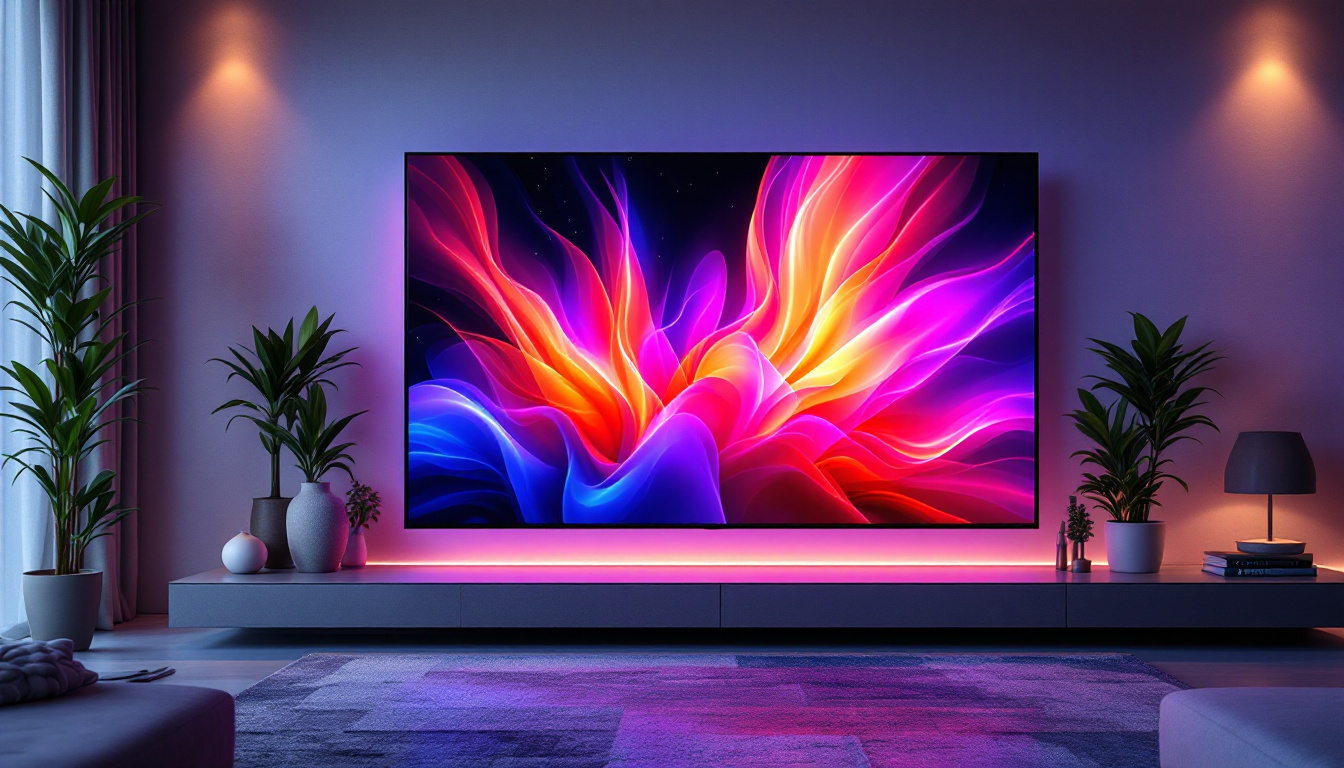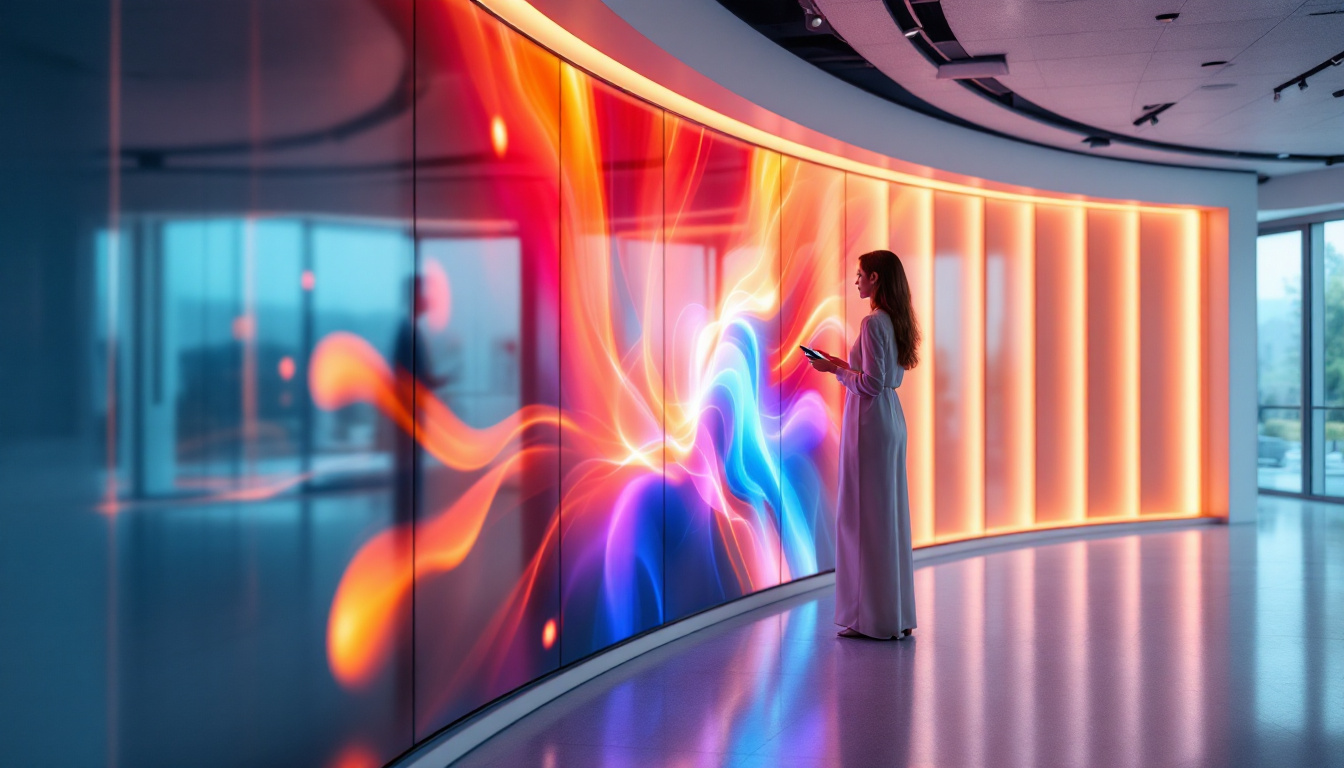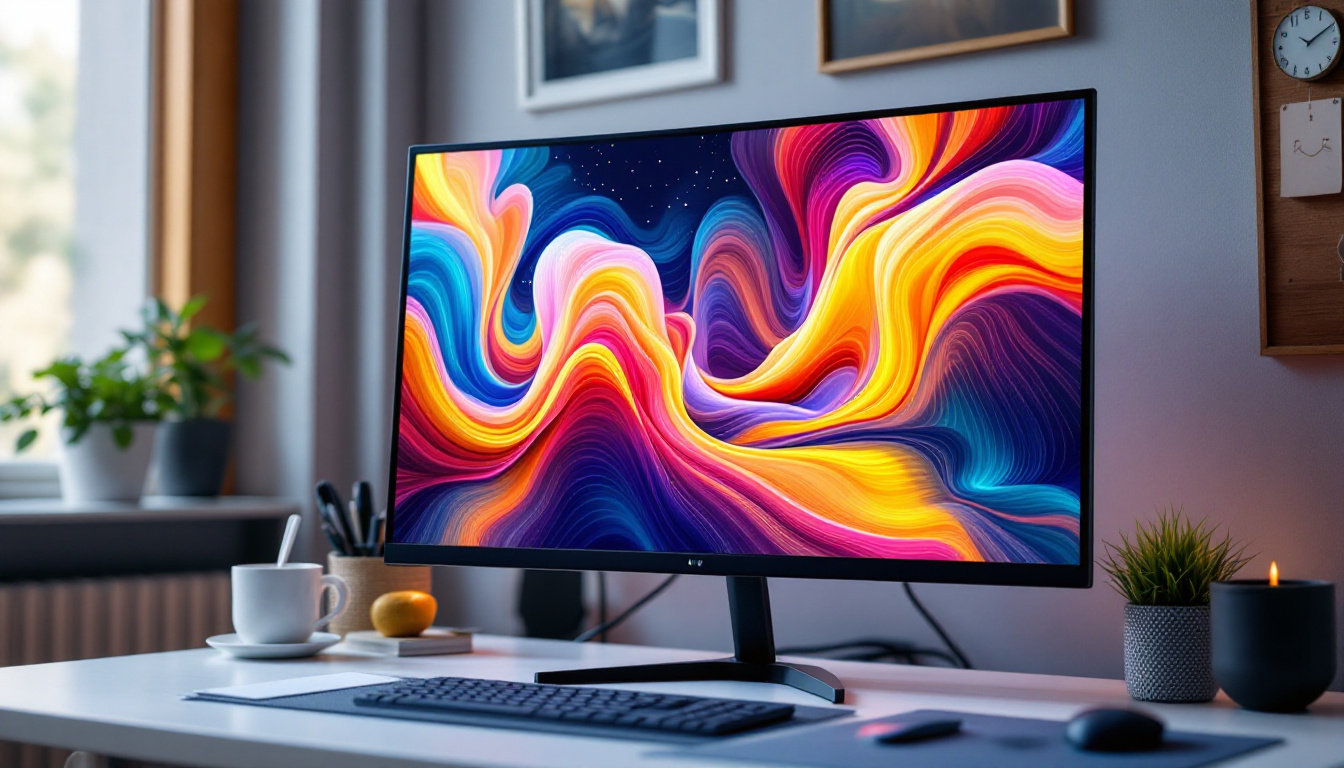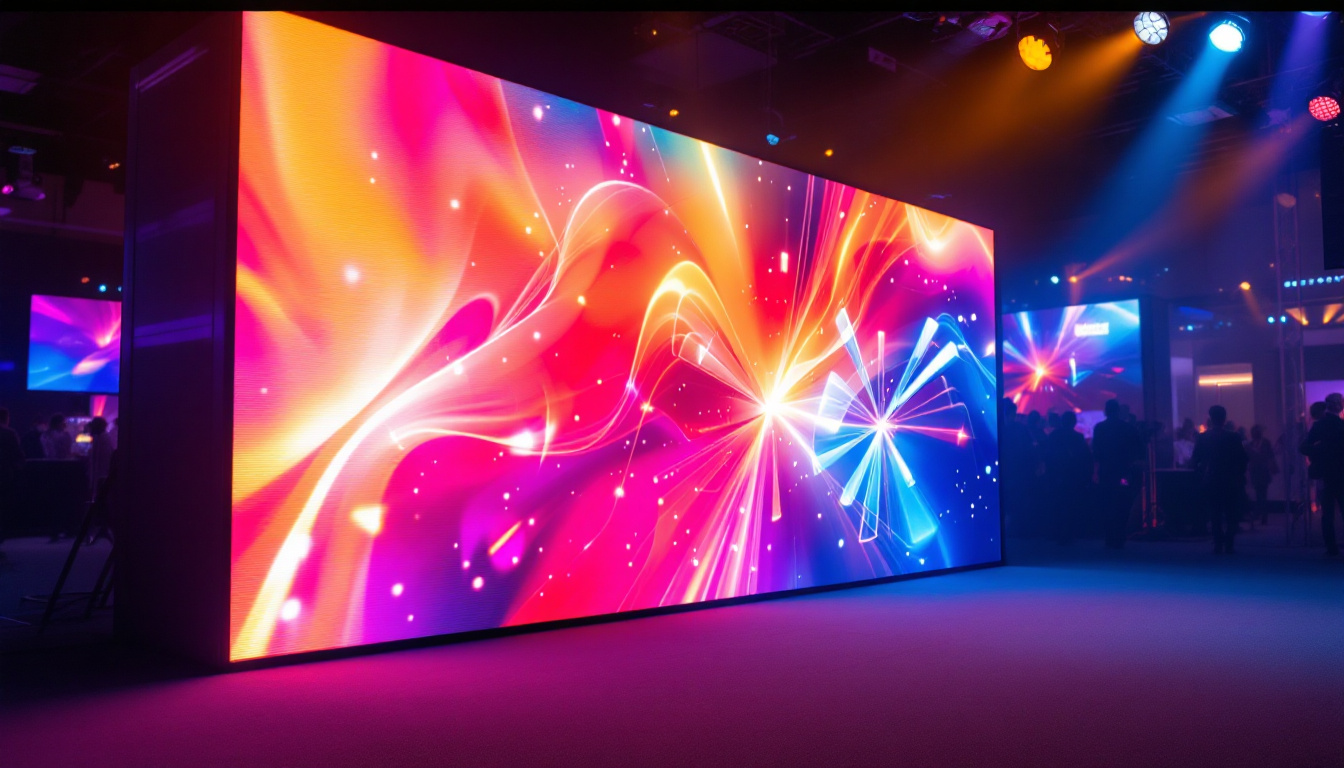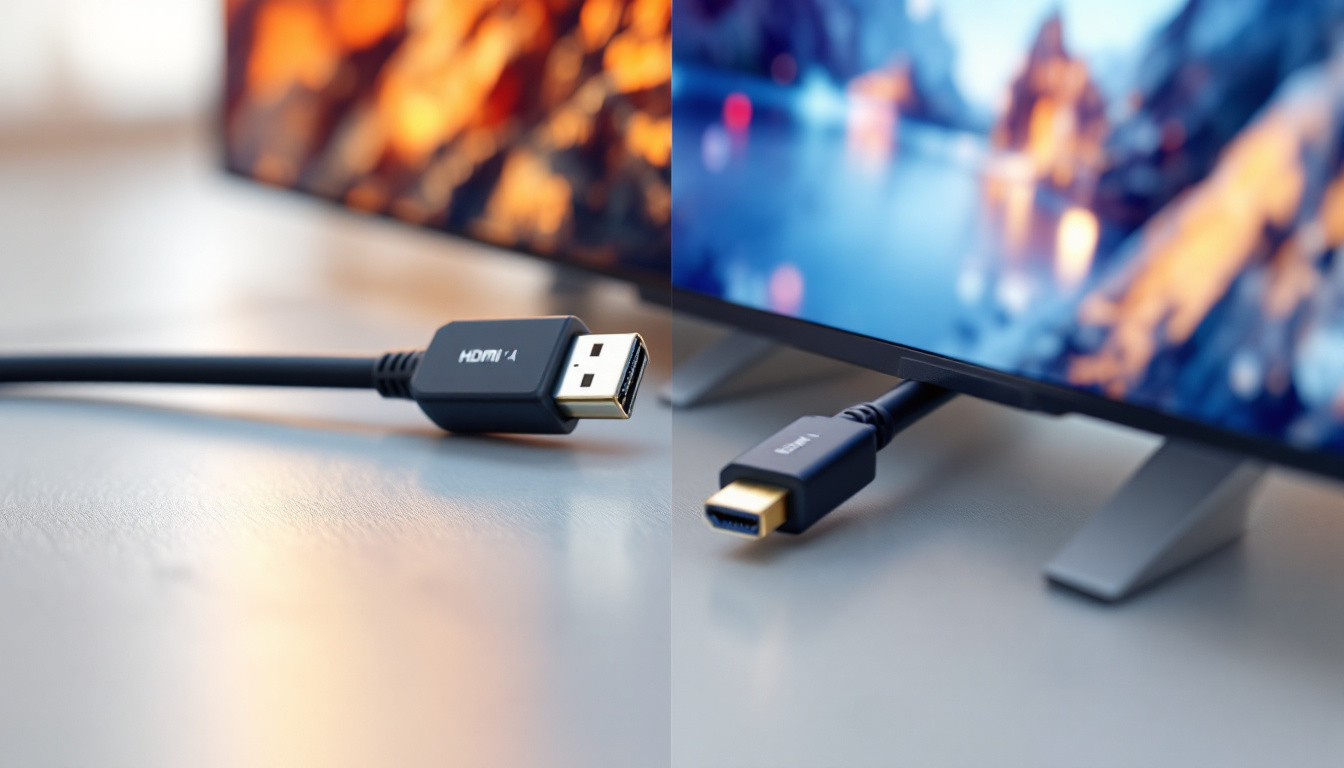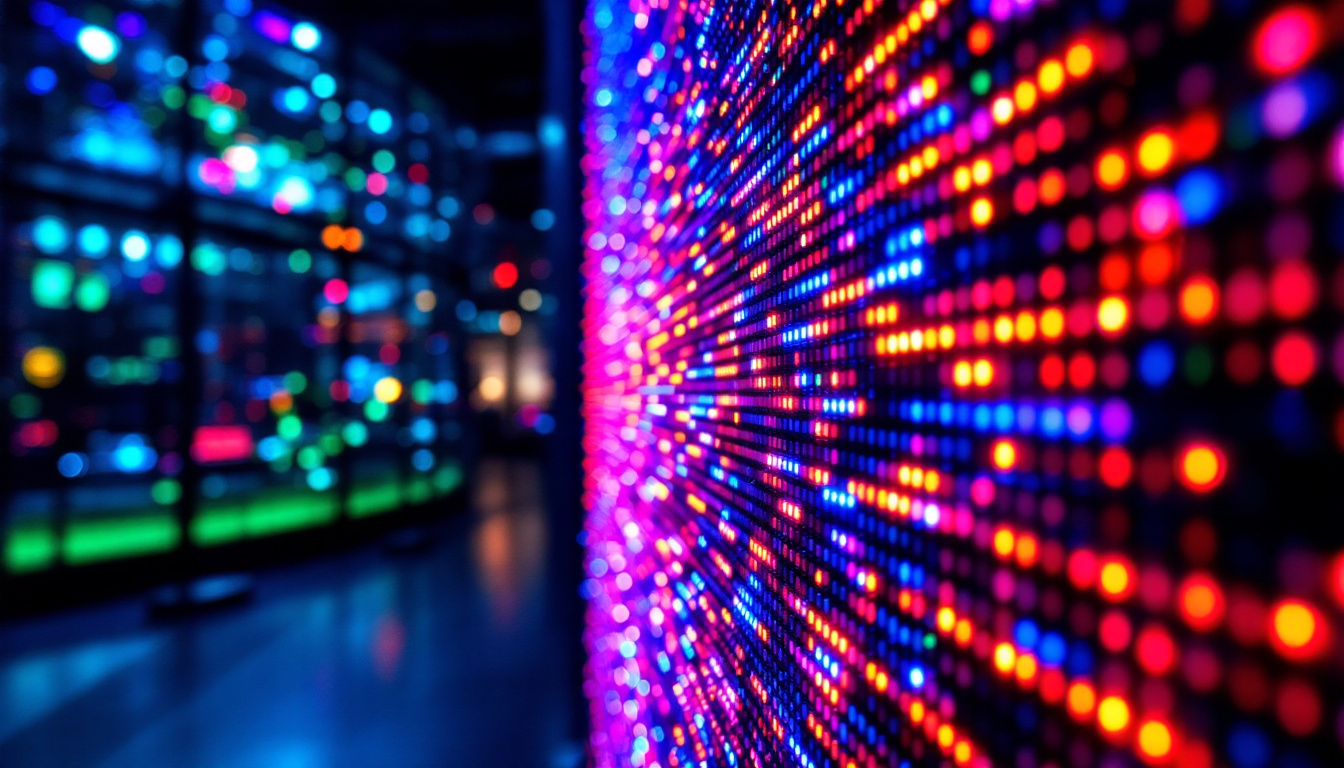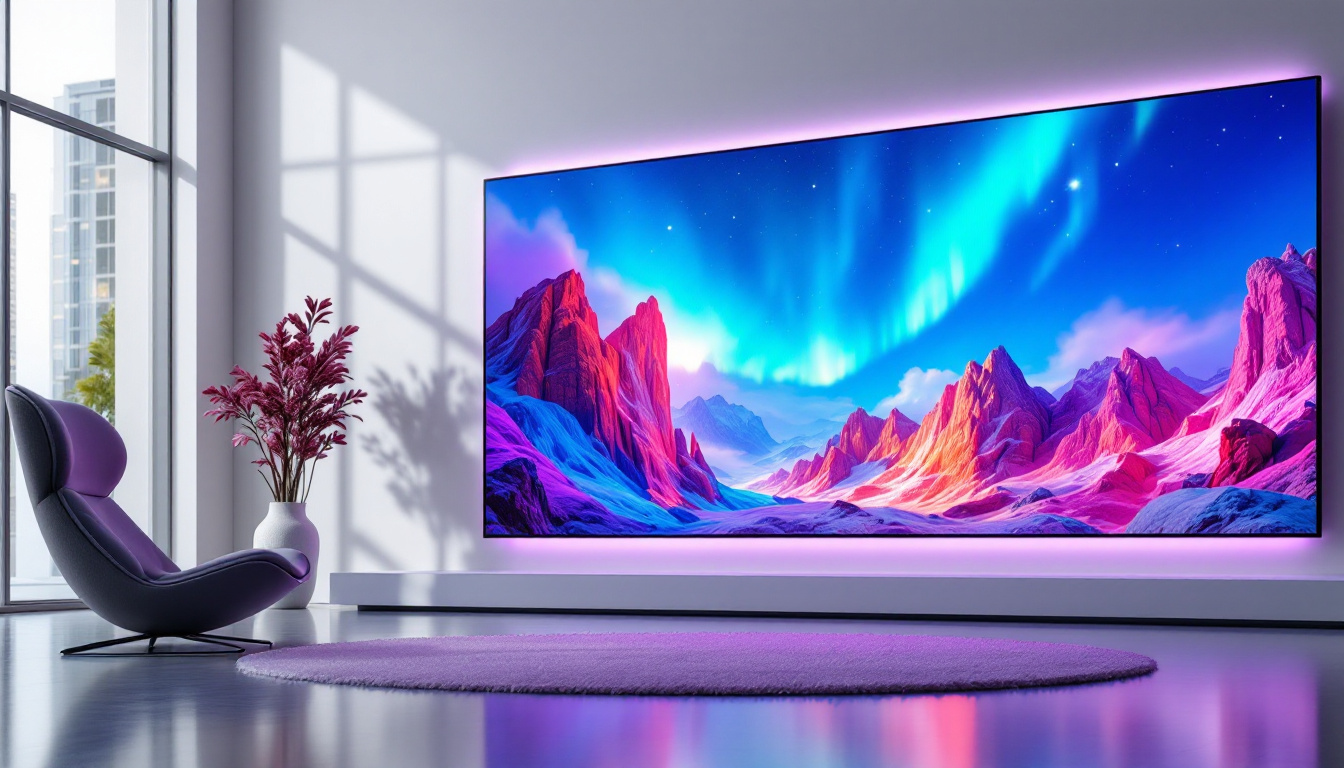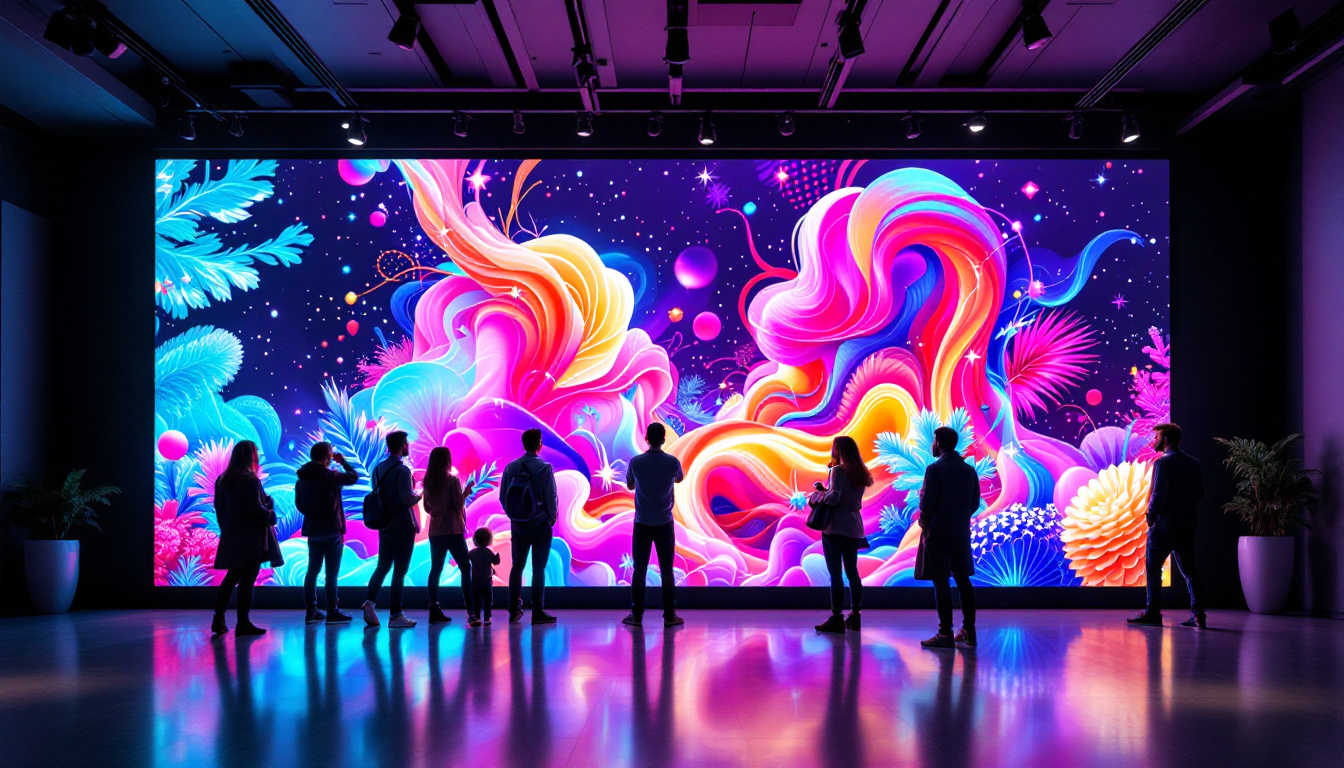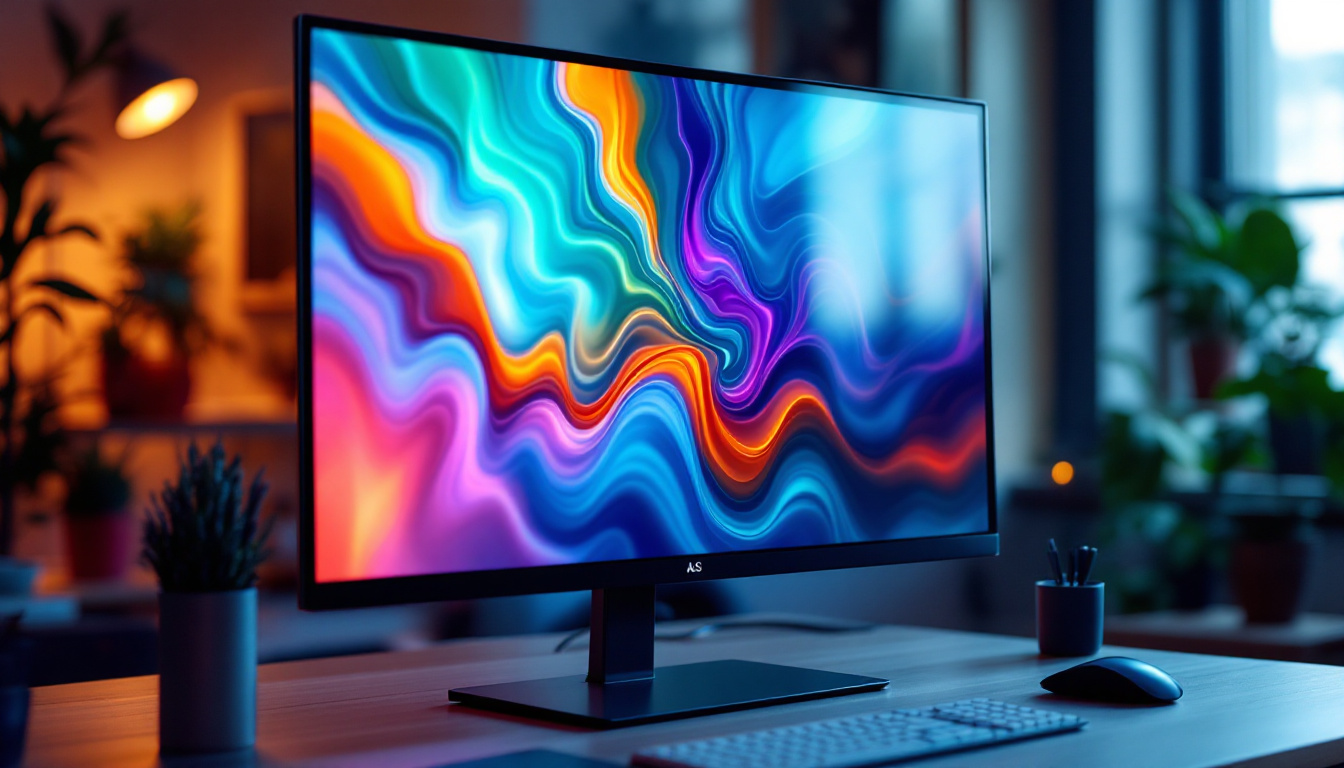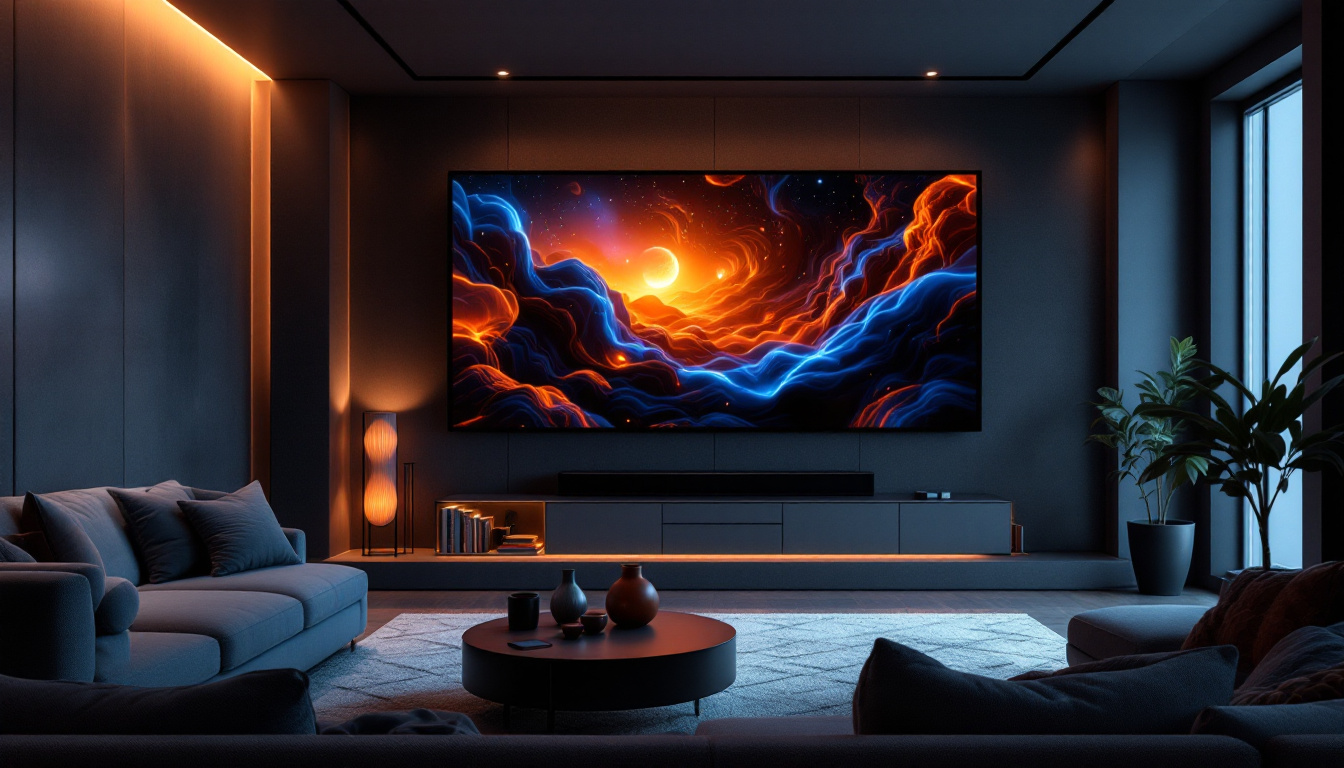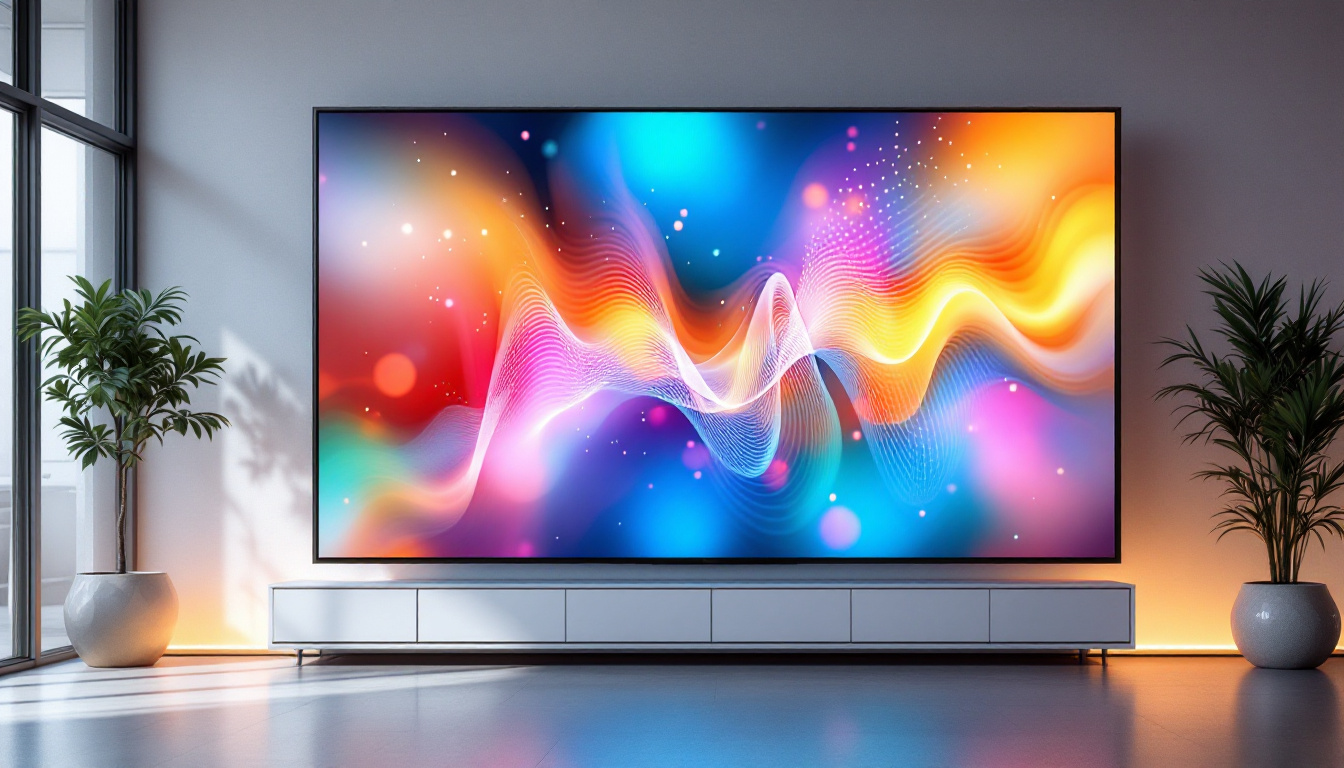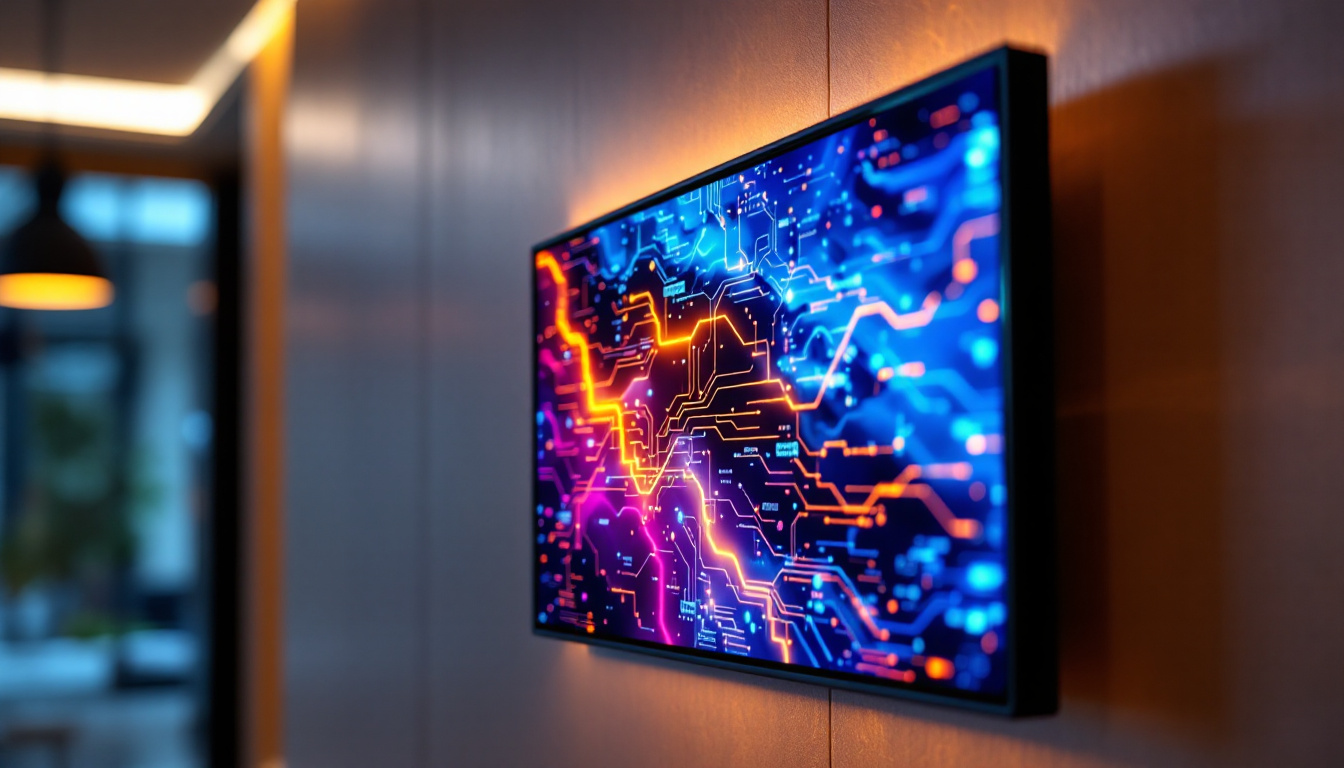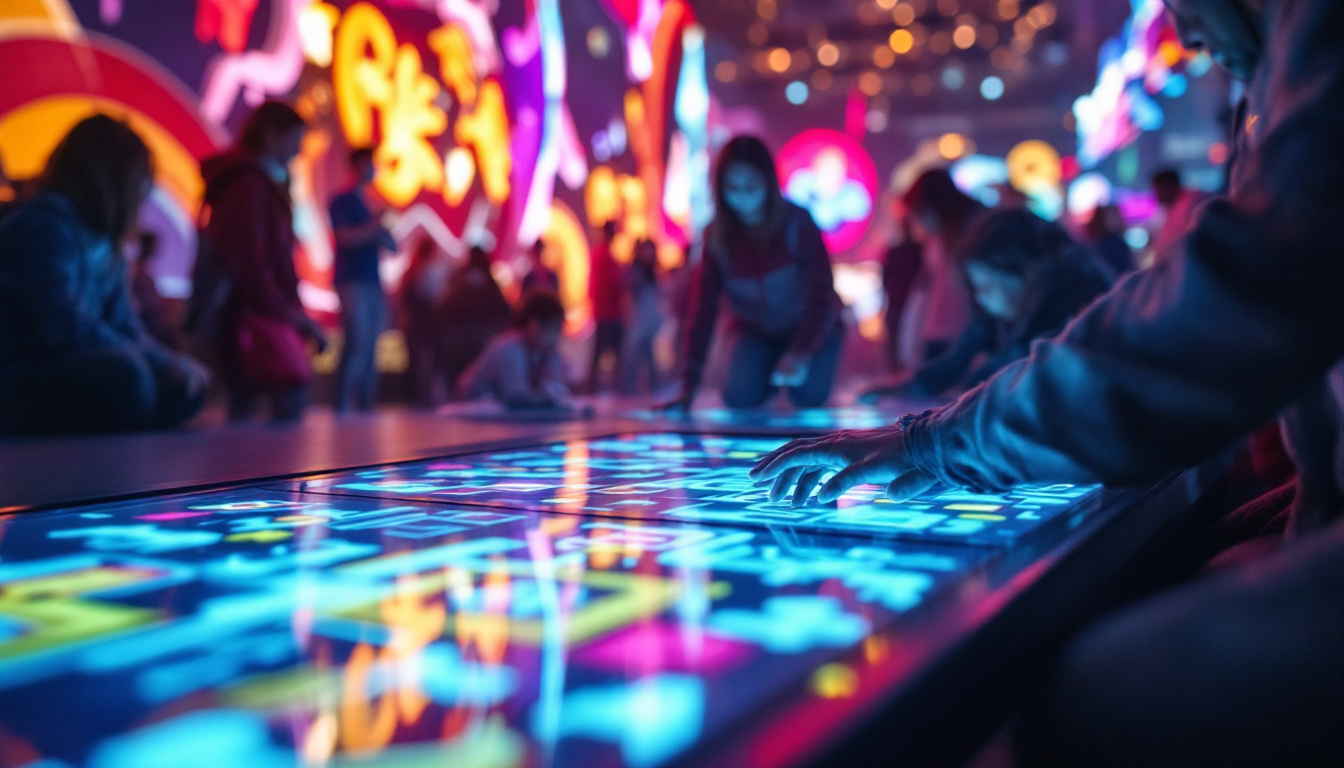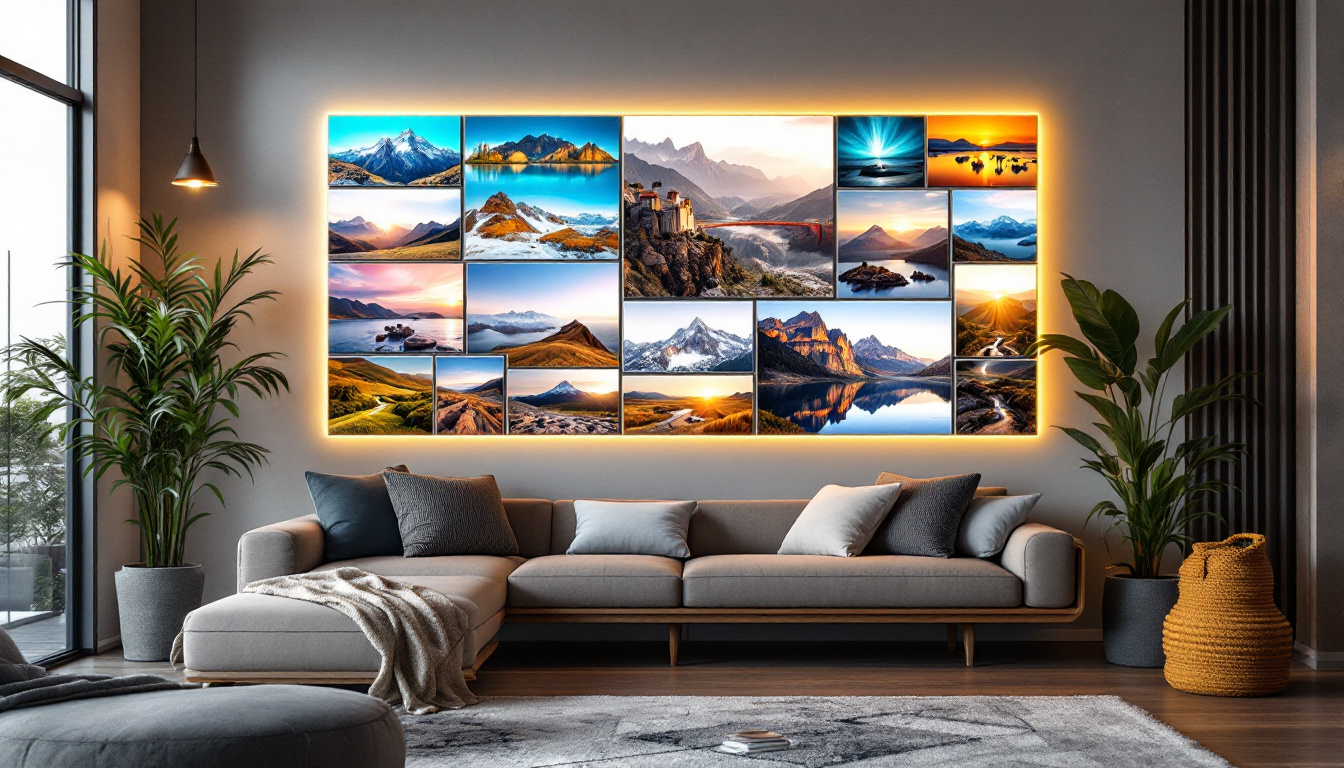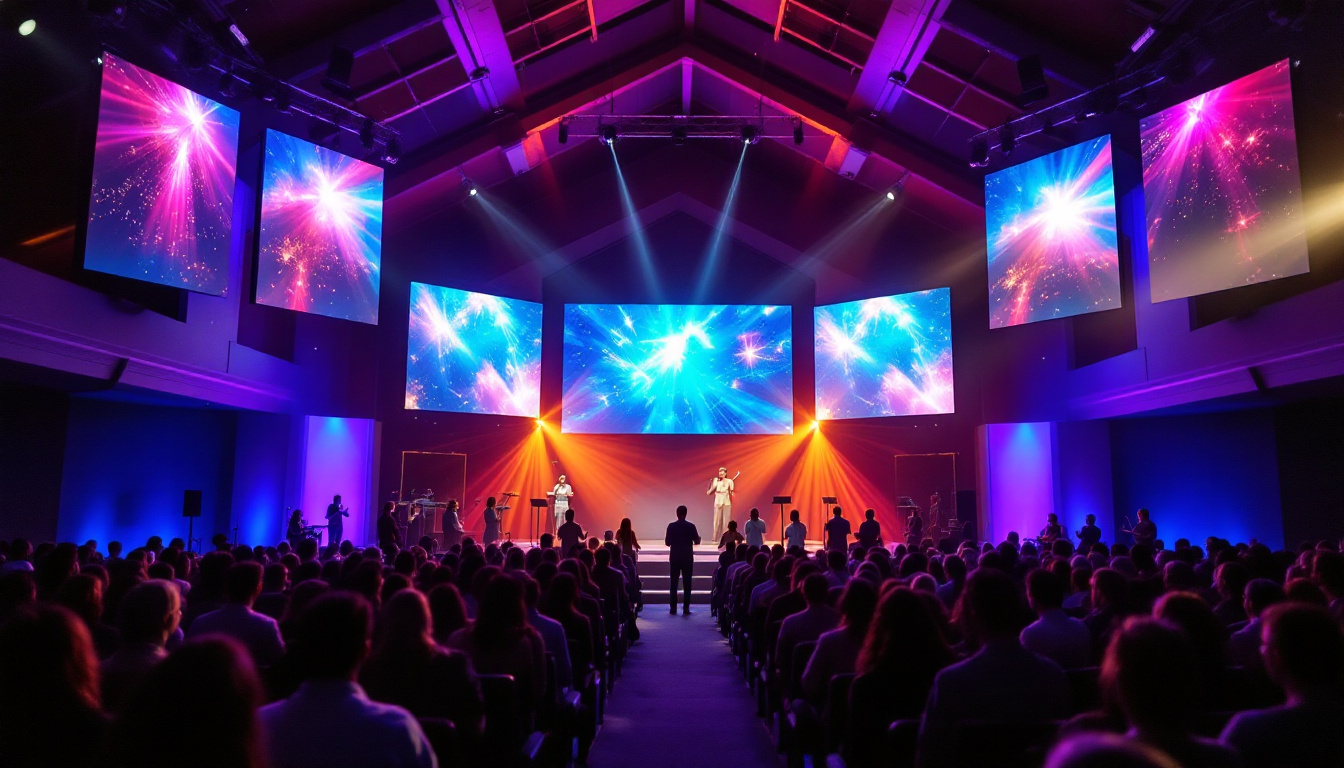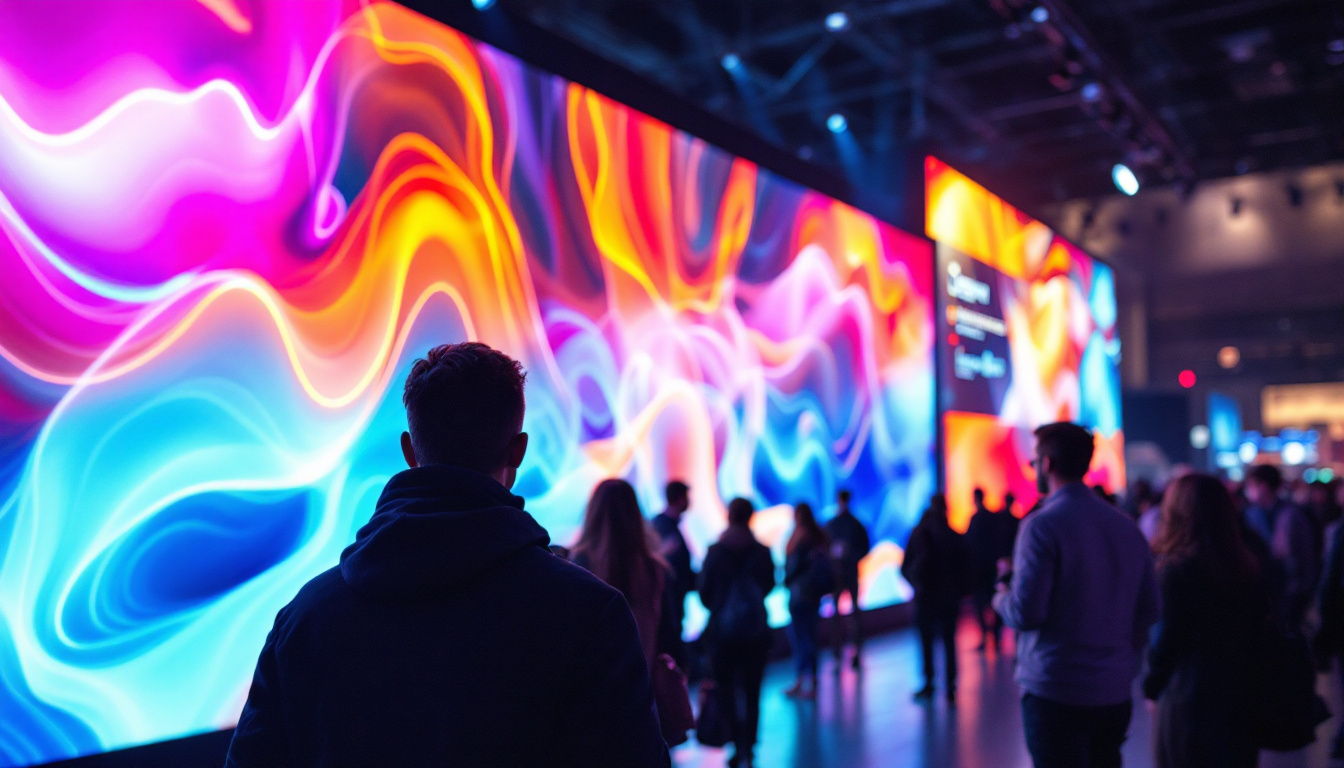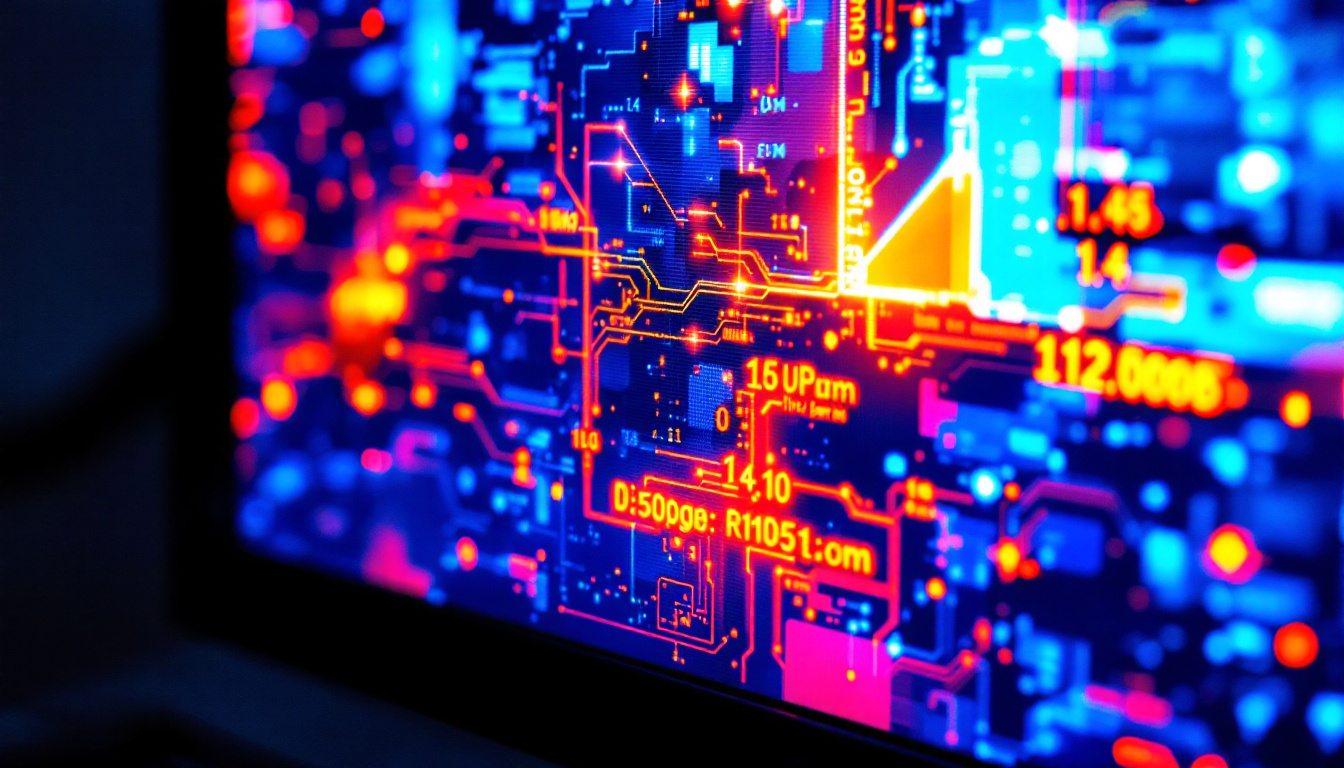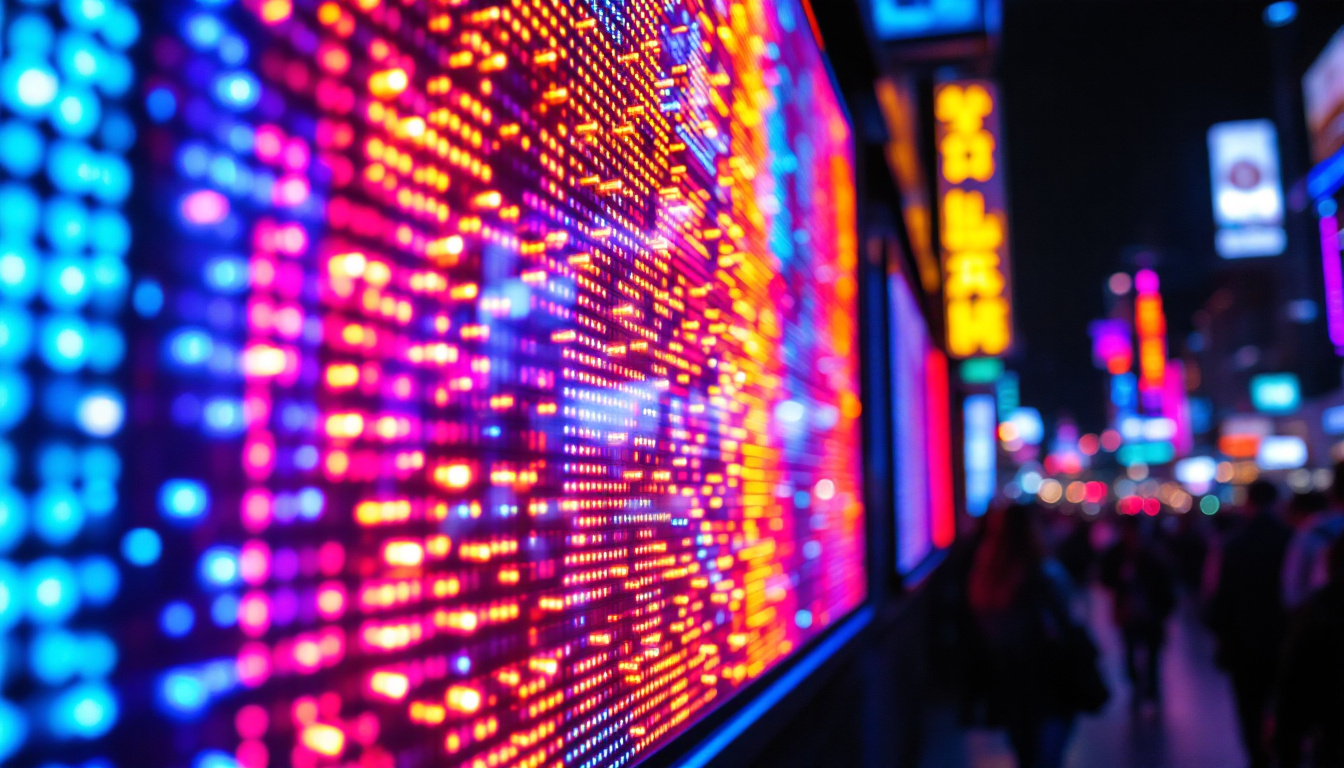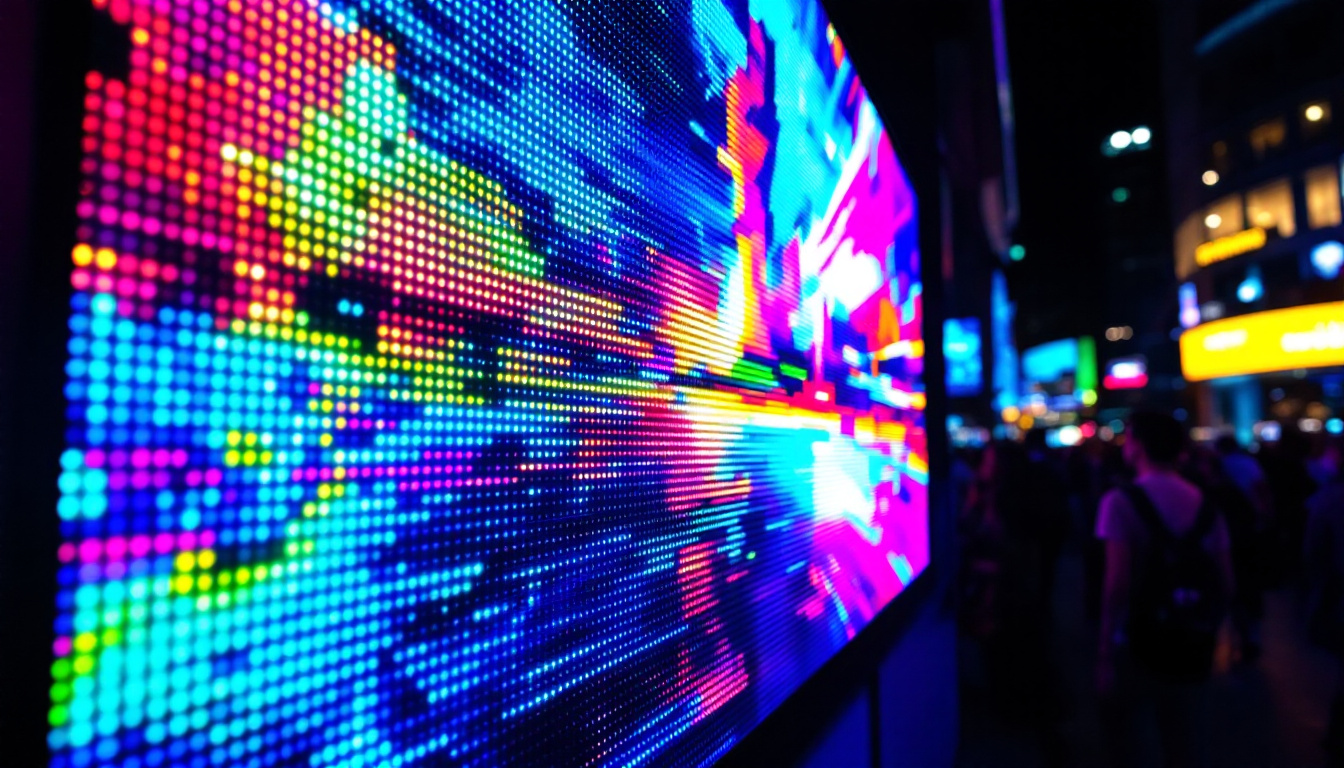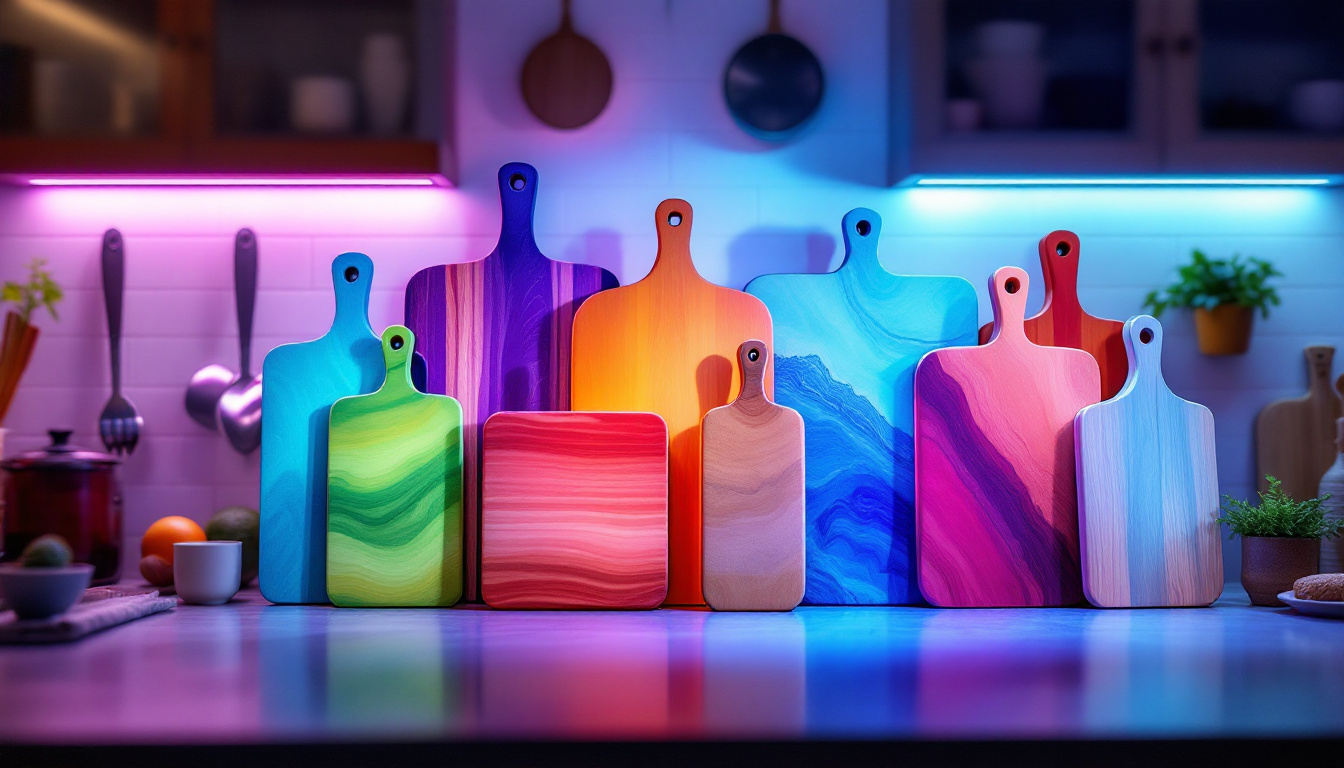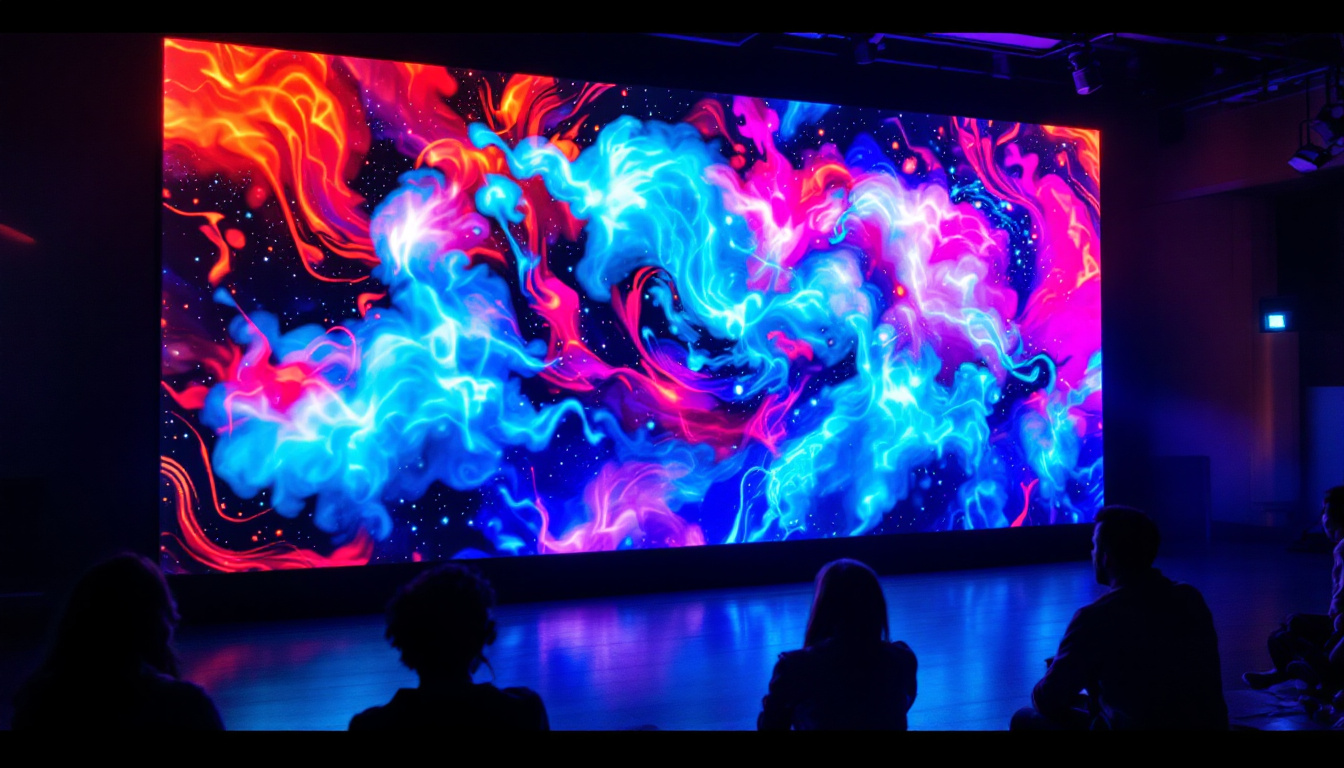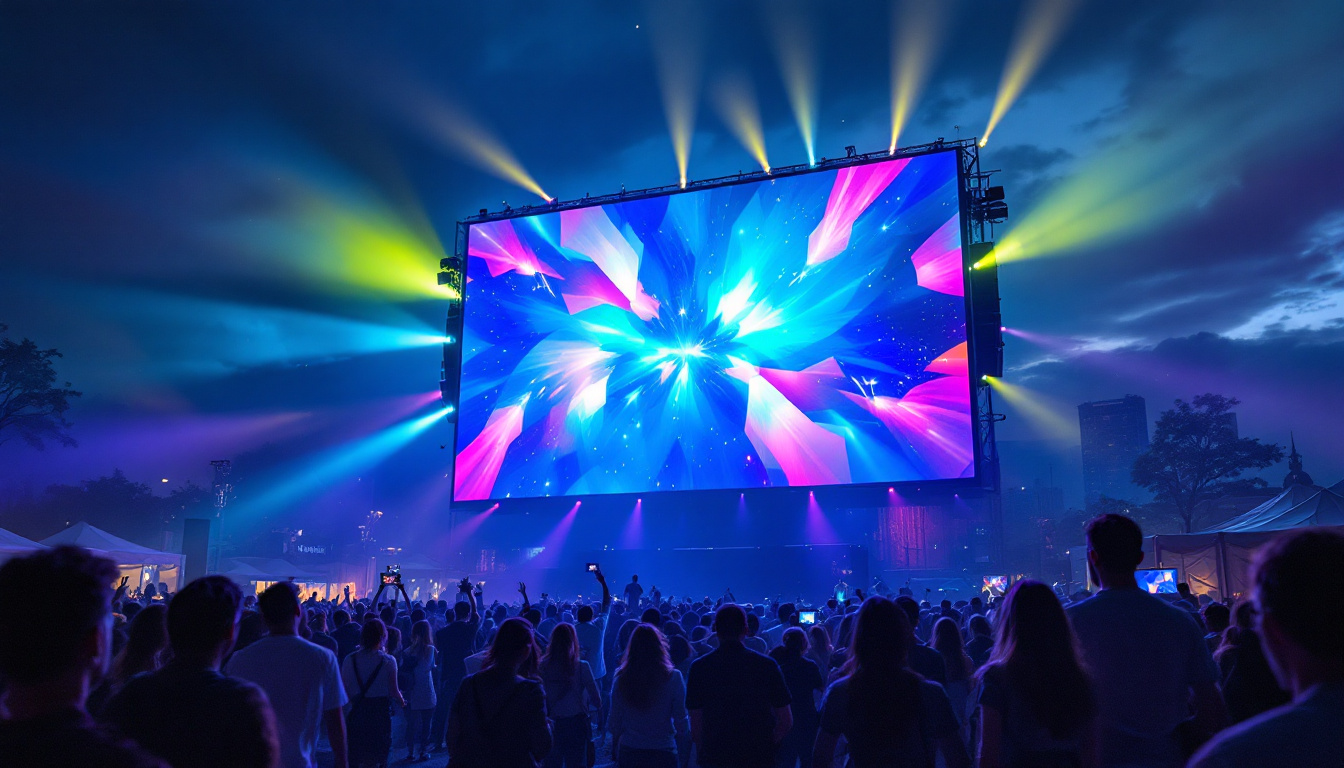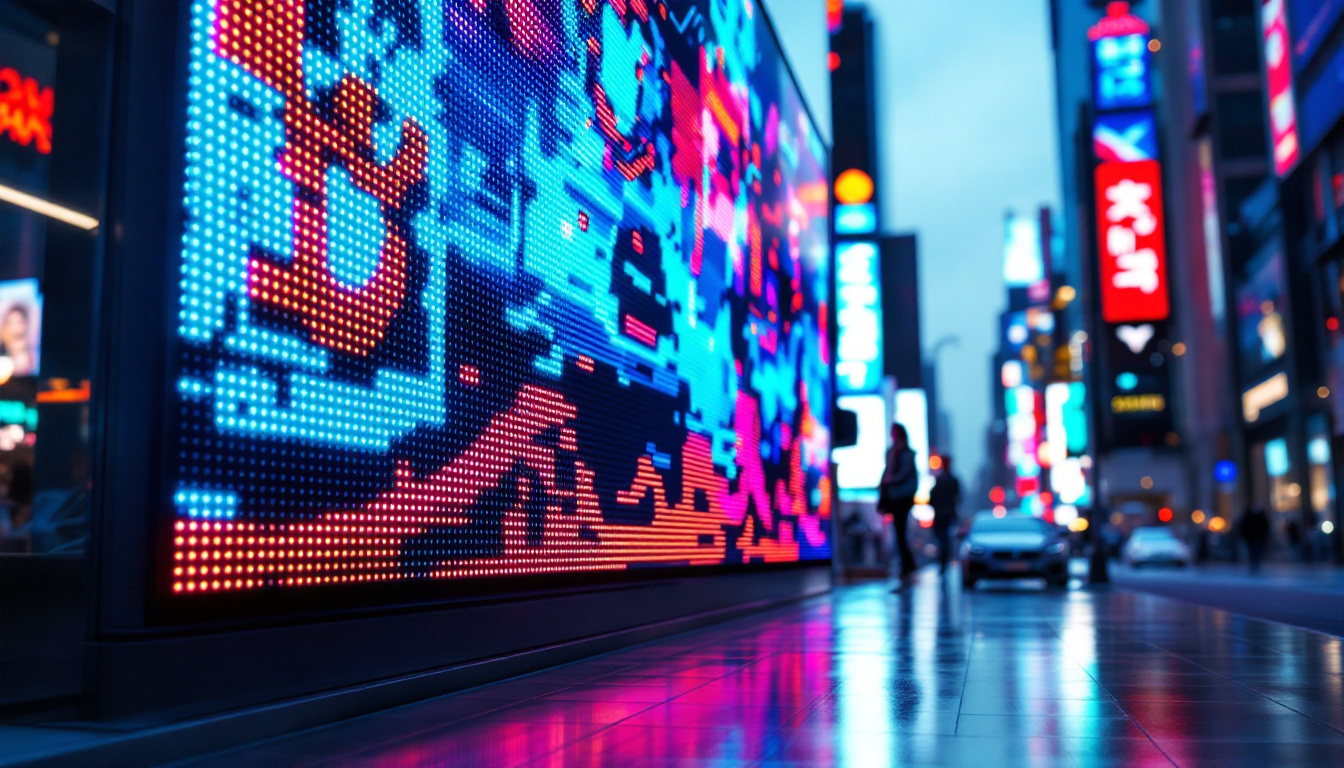Ultra Thin LED Lights: LED Display Explained
In recent years, ultra-thin LED lights have revolutionized the way we perceive and interact with visual displays. These innovative lighting solutions are not only sleek and stylish but also offer a plethora of benefits that cater to various applications, from advertising to interior design. This article delves into the intricacies of ultra-thin LED lights, exploring their technology, advantages, applications, and future trends.
Understanding LED Technology
Light Emitting Diodes (LEDs) have transformed the lighting industry with their efficiency and versatility. Unlike traditional incandescent bulbs, LEDs emit light through a semiconductor, which makes them more energy-efficient and longer-lasting.
How LEDs Work
The basic principle behind LED technology involves electroluminescence, where a material emits light in response to an electric current. When electricity passes through the semiconductor, electrons recombine with holes, releasing energy in the form of photons. This process is what generates light, and the color of the emitted light depends on the materials used in the semiconductor.
Interestingly, the development of LED technology has also led to advancements in color rendering. Unlike incandescent bulbs that emit a warm yellow light, LEDs can produce a wide spectrum of colors, making them suitable for various applications—from mood lighting in homes to vibrant displays in commercial settings. Furthermore, the ability to adjust the color temperature of LEDs allows users to create different atmospheres, enhancing the functionality of spaces while catering to personal preferences.
Benefits of LED Technology
LEDs offer numerous advantages over conventional lighting solutions. They consume significantly less power, which translates to lower energy bills and a reduced carbon footprint. Additionally, LEDs have a longer lifespan, often lasting up to 25,000 hours or more, which minimizes the need for frequent replacements.
Moreover, LEDs produce less heat compared to traditional bulbs, making them safer to use and reducing the risk of fire hazards. Their compact size allows for greater design flexibility, enabling manufacturers to create ultra-thin models that can be seamlessly integrated into various environments. This adaptability has made LEDs a popular choice not only in residential settings but also in commercial spaces, automotive lighting, and even in outdoor applications like streetlights and architectural lighting. The durability of LEDs also means they are less susceptible to breakage, making them ideal for use in high-traffic areas or in fixtures that are difficult to replace.
In addition to their practical benefits, the environmental impact of LED technology is noteworthy. As they require less energy to operate, the widespread adoption of LEDs can significantly reduce greenhouse gas emissions associated with electricity production. Many governments and organizations are promoting the transition to LED lighting as part of their sustainability initiatives, recognizing the potential for LEDs to contribute to a greener future. This shift not only helps in conserving energy but also encourages innovation in lighting design, paving the way for smarter, more efficient lighting solutions in the years to come.
What are Ultra Thin LED Lights?
Ultra-thin LED lights are a specific category of LED technology characterized by their slim profile and lightweight design. These lights are typically less than an inch thick, making them ideal for applications where space is limited or where a sleek aesthetic is desired.
Design and Aesthetics
The design of ultra-thin LED lights plays a crucial role in their appeal. Their minimalistic look allows them to blend seamlessly into modern architecture and interior décor. Whether used in residential settings, commercial spaces, or outdoor environments, ultra-thin LED lights can enhance the overall aesthetic without overwhelming the design.
Types of Ultra Thin LED Lights
There are several types of ultra-thin LED lights available on the market today. These include:
- Panel Lights: Often used in commercial settings, panel lights provide uniform illumination and can be installed in ceilings or walls.
- Strip Lights: Flexible LED strip lights can be cut to size and are ideal for accent lighting or under-cabinet applications.
- Backlit Displays: Ultra-thin LED displays are commonly used in advertising and signage, providing vibrant visuals in a compact form.
Applications of Ultra Thin LED Lights
The versatility of ultra-thin LED lights allows them to be used in a wide range of applications. From enhancing home interiors to creating eye-catching advertisements, the possibilities are virtually limitless.
Residential Use
In residential settings, ultra-thin LED lights can be used for various purposes, including ambient lighting, task lighting, and accent lighting. Their sleek design makes them perfect for modern homes, where homeowners seek to create a clean and uncluttered aesthetic.
For instance, ultra-thin panel lights can be installed in kitchens and living rooms to provide bright, even illumination. Additionally, LED strip lights can be used to highlight architectural features or create mood lighting in bedrooms and entertainment areas.
Commercial Use
In commercial spaces, ultra-thin LED lights are increasingly popular for their energy efficiency and aesthetic appeal. Retail stores often use these lights to create attractive displays that draw customers’ attention. Ultra-thin backlit displays can showcase products in an engaging manner, enhancing the overall shopping experience.
Moreover, offices are adopting ultra-thin LED lights for their workspace illumination. These lights not only improve visibility but also contribute to a more productive work environment by reducing eye strain and fatigue.
Outdoor Applications
Ultra-thin LED lights are also making their mark in outdoor settings. From landscape lighting to architectural illumination, these lights can enhance the beauty of outdoor spaces. Their weather-resistant designs ensure durability, allowing them to withstand various environmental conditions.
In addition, ultra-thin LED lights are commonly used in signage and advertising. Their bright and vibrant displays can capture attention even in daylight, making them an effective tool for businesses looking to promote their brand.
Advantages of Ultra Thin LED Lights
Ultra-thin LED lights come with a host of advantages that make them a preferred choice for many applications. Understanding these benefits can help consumers make informed decisions when selecting lighting solutions.
Energy Efficiency
One of the most significant advantages of ultra-thin LED lights is their energy efficiency. These lights consume significantly less power compared to traditional lighting options, resulting in lower electricity bills. This energy efficiency not only benefits consumers financially but also contributes to environmental sustainability by reducing energy consumption and greenhouse gas emissions.
Longevity and Durability
Ultra-thin LED lights have an impressive lifespan, often lasting up to 50,000 hours or more. This longevity reduces the frequency of replacements, making them a cost-effective option in the long run. Additionally, LEDs are more durable than traditional bulbs, as they are less prone to breakage and can withstand shock and vibration.
Versatility and Customization
The versatility of ultra-thin LED lights allows for a wide range of customization options. They can be easily integrated into various designs and applications, providing flexibility for architects, designers, and consumers alike. Whether it’s a simple installation or a complex lighting system, ultra-thin LEDs can be tailored to meet specific needs.
Challenges and Considerations
While ultra-thin LED lights offer numerous advantages, there are also challenges and considerations to keep in mind when selecting and installing these lighting solutions.
Initial Cost
One of the primary challenges associated with ultra-thin LED lights is their initial cost. Although they are more cost-effective in the long run due to their energy efficiency and longevity, the upfront investment can be higher than traditional lighting options. Consumers should weigh the long-term savings against the initial expenditure when making a decision.
Heat Management
Despite producing less heat than traditional bulbs, ultra-thin LED lights still generate some heat during operation. Proper heat management is essential to ensure optimal performance and longevity. Installing LED lights in well-ventilated areas can help dissipate heat and prevent potential issues.
Quality Variability
The market for ultra-thin LED lights is diverse, with various manufacturers offering products at different price points. This variability can lead to differences in quality, brightness, and color accuracy. It is crucial for consumers to research and select reputable brands to ensure they receive high-quality products that meet their expectations.
Future Trends in Ultra Thin LED Lighting
The future of ultra-thin LED lighting looks promising, with ongoing advancements in technology and design. As the demand for energy-efficient and aesthetically pleasing lighting solutions continues to grow, manufacturers are exploring new possibilities to enhance the functionality and appeal of ultra-thin LEDs.
Smart Lighting Integration
One of the most significant trends in the lighting industry is the integration of smart technology. Ultra-thin LED lights are increasingly being designed to work with smart home systems, allowing users to control their lighting through smartphones or voice-activated devices. This integration enhances convenience and allows for personalized lighting experiences.
Improved Color Rendering
Advancements in LED technology are also leading to improvements in color rendering capabilities. Future ultra-thin LED lights are expected to offer enhanced color accuracy, allowing for more vibrant and true-to-life lighting. This improvement will be particularly beneficial in applications such as photography, art galleries, and retail displays.
Sustainability and Eco-Friendly Designs
As sustainability becomes a more pressing concern, manufacturers are focusing on creating eco-friendly ultra-thin LED lights. This includes using recyclable materials, reducing waste during production, and designing products that are easier to recycle at the end of their lifespan. Consumers can expect to see a growing range of environmentally friendly options in the market.
Conclusion
Ultra-thin LED lights represent a significant advancement in lighting technology, offering a combination of energy efficiency, longevity, and aesthetic appeal. Their versatility allows them to be used in various applications, from residential and commercial spaces to outdoor settings. While there are challenges to consider, the benefits far outweigh the drawbacks, making ultra-thin LEDs a smart choice for modern lighting solutions.
As technology continues to evolve, the future of ultra-thin LED lighting promises even more exciting developments. With smart integration, improved color rendering, and a focus on sustainability, these lights are set to play a pivotal role in shaping the way we illuminate our environments. Whether for practical use or decorative purposes, ultra-thin LED lights are undoubtedly a bright choice for the future.
Illuminate Your Space with LumenMatrix
Ready to embrace the future of lighting with ultra-thin LED solutions? LumenMatrix is at the forefront of LED display technology, offering a wide array of innovative products that cater to your unique needs. From vibrant Indoor LED Wall Displays to dynamic Outdoor LED Wall Displays, and from sleek LED Poster Displays to interactive Floor LED Displays, our solutions are designed to transform your visual communication and captivate your audience. Discover the difference that LumenMatrix can make in enhancing your brand visibility and creating unforgettable visual experiences. Check out LumenMatrix LED Display Solutions today and light up your world with cutting-edge technology.

